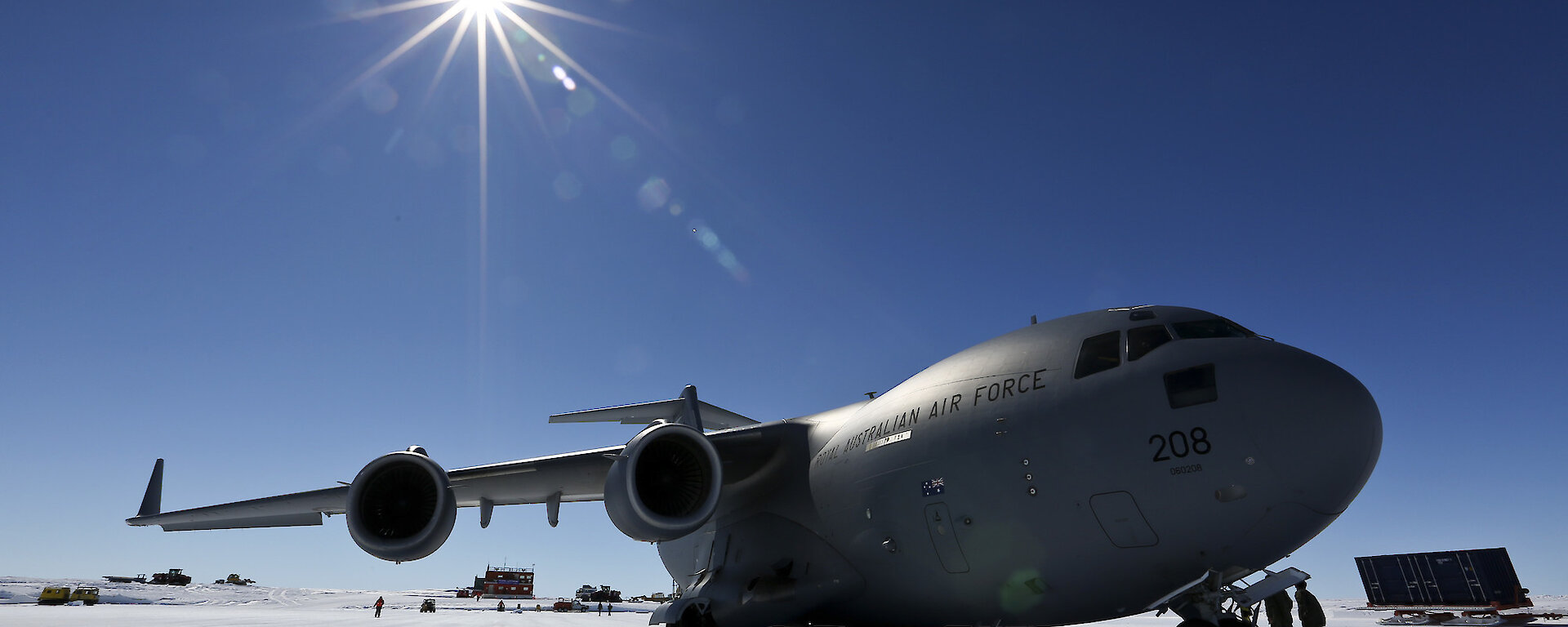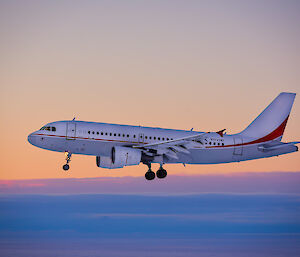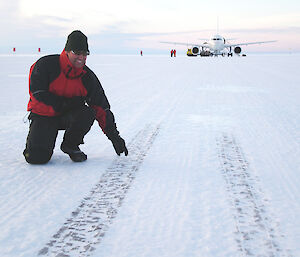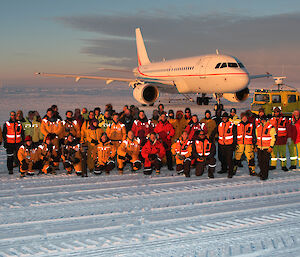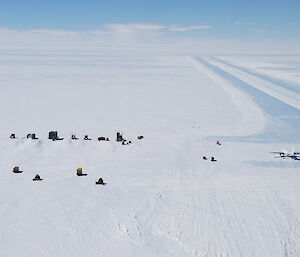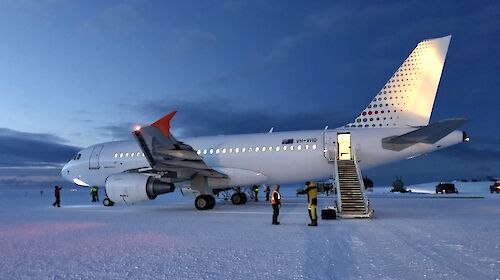The Australian Antarctic Program is celebrating a decade of flights to the frozen continent’s blue ice runway, improving access for hundreds of scientists and expeditioners.
A total of 131 flights carrying more than 1600 people have landed at Wilkins Aerodrome since it officially opened on 10 January 2008.
Australian Antarctic Division Acting Aviation Manager, Steve Wall, said over the past 10 years the majority of flights have departed from Hobart, the gateway to East Antarctica.
“Where the ship takes weeks, Wilkins Aerodrome gives us the ability to fly expeditioners and equipment between Australia and Antarctica in just over four hours.”
An Airbus 319 (A319) and Royal Australian Air Force C-17A are used for the flights, landing on the glacial runway which moves about 12 metres each year.
“We fly between October and March each year and have a team living onsite who prepare the runway using snow groomers, graders and snow blowers,” Mr Wall said.
“They’re also trained as weather observers to monitor the often changing conditions on flight days.”
The A319, operated by Skytraders, carries up to 38 expeditioners on each of the 3400km flights.
“When they land, the passengers either travel 70km overland to Australia’s Casey research station, or make a connecting intra-continental flight to another Antarctic station.
The Royal Australian Air Force and Australian Antarctic Division started joint operational missions with a C-17A in 2015.
“The C-17A has flown 19 missions to Wilkins Aerodrome, transporting large cargo such as helicopters, over-snow vehicles known as Hägglunds, and a 23 tonne tractor to the continent.”
Wilkins Aerodrome operates as a certified aerodrome in accordance with Civil Aviation Safety Authority regulations.
The aerodrome is named after Sir Hubert Wilkins, the first person to fly over Antarctica in 1928.

